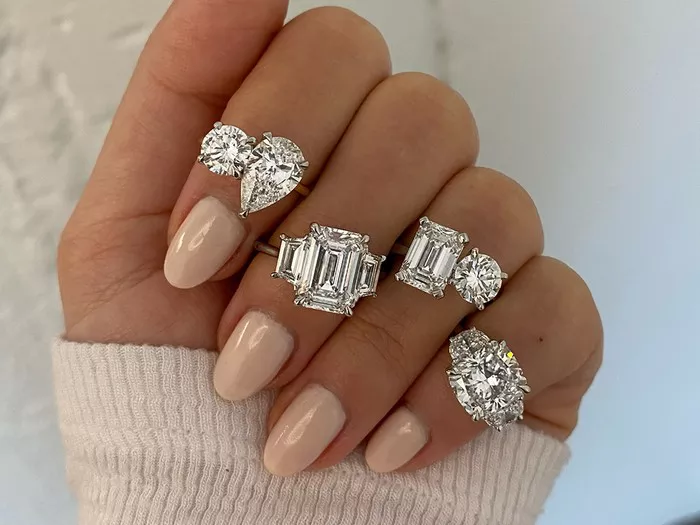Move over, solitaires—stackable rings have emerged as the dominant trend in fine jewelry, transforming how people collect, wear, and think about their rings. What began as a bohemian styling trick has evolved into a sophisticated jewelry strategy, with women (and increasingly men) building curated stacks that tell their personal stories over time. The global stackable rings market is projected to reach $8.9 billion by 2027, growing at an unprecedented 12% annual rate as consumers embrace this versatile, budget-friendly approach to self-expression.
Unlike traditional ring-wearing conventions that dictated one “important” ring per finger, stacking encourages playful combinations of multiple thin bands in varying metals, textures, and gemstones. The aesthetic possibilities are endless: mix rose and white gold for contrast, alternate diamond pavé with plain bands for rhythm, or incorporate birthstones for personal significance. Some stacks follow careful rules of progression (graduating sizes or coordinated colors), while others embrace intentional eclecticism. Luxury brands like Cartier and Tiffany now offer entire collections designed specifically for stacking, while indie jewelers thrive on creating unique, mismatched sets.
The trend’s popularity stems from several cultural factors. Financially, stackable rings offer an accessible entry point to fine jewelry—instead of saving for one expensive piece, buyers can gradually accumulate meaningful rings over time. This aligns perfectly with younger consumers’ preference for experiential gifting; partners might add to a stack for each anniversary, parents can gift rings to mark children’s milestones, or individuals can treat themselves to commemorate personal achievements. Psychologists note that this incremental approach creates deeper emotional connections than single large purchases.
Symbolism plays a major role in the stacking phenomenon. Each added ring can represent a chapter in the wearer’s life—a black diamond for surviving a difficult period, a blue sapphire for a career achievement, or an engraved band with coordinates of a meaningful location. Some stacks function as visual timelines, with rings added chronologically to mark events. Others follow more abstract narratives, like color palettes reflecting personality traits. This storytelling aspect has made stacked rings particularly popular for modern engagements, where couples might design a stack together rather than choosing a single traditional ring.
The trend has sparked innovation in jewelry design. Ultra-thin bands (some as slender as 1mm) allow for comfortable multi-ring wear, while patented locking systems keep stacks perfectly aligned. Designers experiment with unconventional shapes—hexagonal profiles, open cuffs, or rings with movable elements—to create dynamic visual interest when stacked. Retailers have adapted by offering “stack styling” consultations and virtual try-on tools that simulate how combinations will look together.
Social media has fueled the stacking craze, with hashtags like #ringstacking amassing millions of posts showcasing creative arrangements. Some influencers have turned their ever-evolving stacks into personal brands, documenting each new addition’s significance. As consumers increasingly view jewelry as wearable autobiography rather than just adornment, the stackable ring trend represents a fundamental shift in how we assign meaning to the pieces we wear every day.


